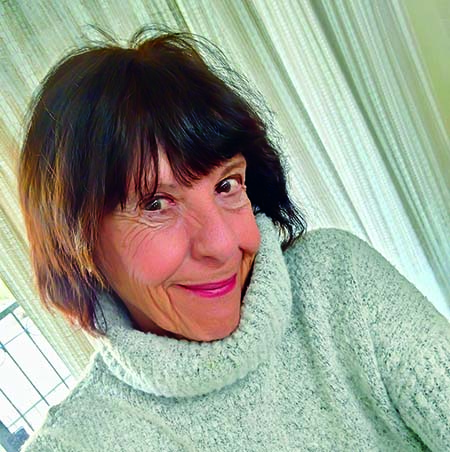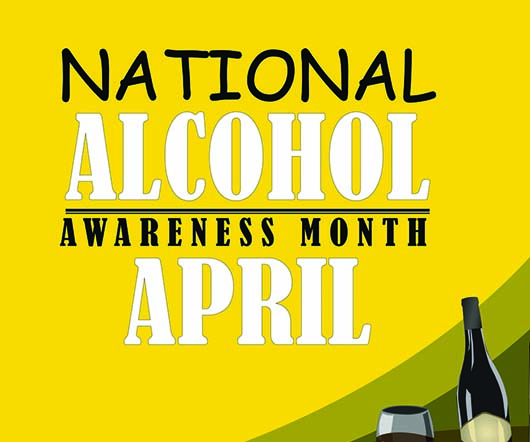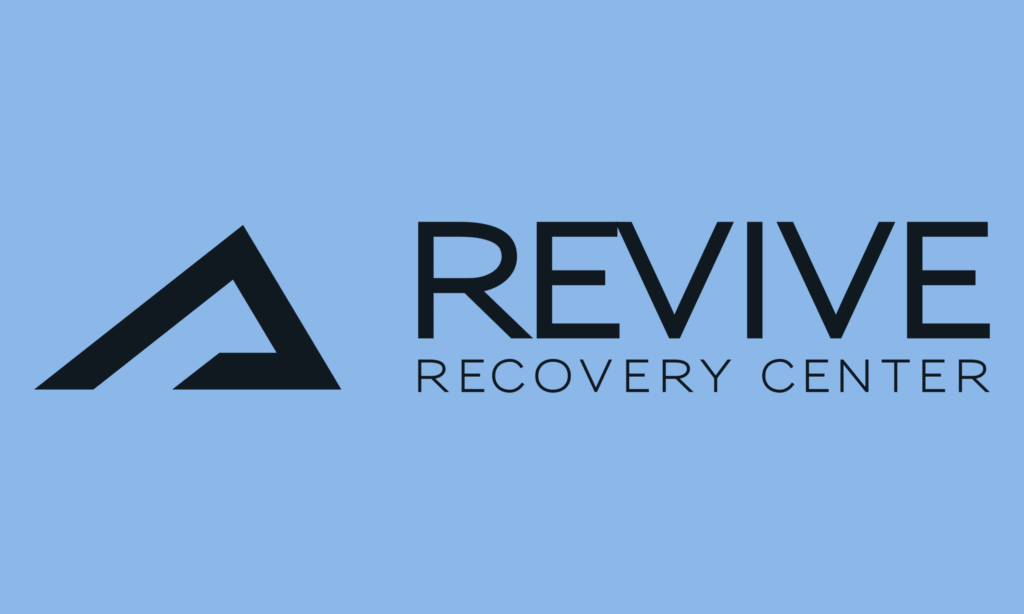By Kristen L. Polin, MAEd, Community Bridges, Inc. (CBI) A New Year offers us the chance to embrace a fresh start and reflect on the lessons passing through our life....
By Kristen L. Polin, MAEd, Community Bridges, Inc. (CBI)
A New Year offers us the chance to embrace a fresh start and reflect on the lessons passing through our life. People come and go in our lives and today, I’m reflecting on my path that crossed with Lori. I’m sharing the personal journey we shared together in the hopes it will help others break through the silence and create a new beginning — before it’s too late.
I have spent my entire career focused on the prevention and education of substance use disorders. When one of my closest friends slipped down the path, all of my experience, knowledge and life’s work did not seem to help.
Lori was a dear friend. It wasn’t a perfect relationship but we knew each other so well. Unfortunately, I couldn’t help save her. She silently suffered for years with mental illness and chemical dependency and her life played out in the predictable fashion when the disease takes over without adequate treatment and recovery support. It was humbling to watch it unfold and six months after her passing, I’m still trying to make sense of it all.
 The final ending for her was marked by a short, but courageous battle with metastatic brain cancer. It was an aggressive disease that struck her brain. It manifested in the very place where for years, she battled severe depression and debilitating anxiety. Her physical and mental health was declining at a rapid pace even before the diagnosis confirmed the worst and I knew something was going terribly wrong.
The final ending for her was marked by a short, but courageous battle with metastatic brain cancer. It was an aggressive disease that struck her brain. It manifested in the very place where for years, she battled severe depression and debilitating anxiety. Her physical and mental health was declining at a rapid pace even before the diagnosis confirmed the worst and I knew something was going terribly wrong.
I was one of a few still by her side near the end. So many relationships suffered along the way and it never felt right for me to walk away from her…even after so many times when she refused help. I was the one responsible for writing her obituary and had to sum her life up in eight short sentences. With the help of another close friend, we organized a tribute that made no mention of who she became in her disease. We focused on the brighter parts, like being a loving mom to her two beautiful sons, a doting daughter to her parents, a sister, an aunt, an amazing nurse (back in the day), an animal lover, avid horse rider, and a vibrant woman with a contagious laugh who always had a group of friends around her. That was when times were good and she was well. I knew her then and highlighted the good, leaving out when things went seriously wrong. After all, this was her final tribute.
Lori’s story is far from unordinary. In fact, it’s more common that we realize and in this day and age. We don’t talk about it enough. It’s a story that hides behind the stigma of a disease that leads to so many suffering in silence. Lori wasn’t a bad person. She wasn’t weak. She had an illness many people simply do not understand until it crosses their path. This disease also takes a toll on family, friends and everyone around them. It’s safe to say that when I was focusing my energy on trying to help Lori, even my family suffered.
Early Warning Signs
I was aware of some of the earlier red flags that Lori’s mental and physical health was declining. She was struggling from obvious anxiety and depression that was to be expected following a tumultuous divorce and impending financial problems. I encouraged her daily to seek professional help knowing that with the right treatment, what she was facing could be a manageable condition and things could get better, if she took that first step.
This was not the direction she was ready for at the time and it may have felt like a thousand mile journey, on foot. This however, is where our loved ones fall through the cracks and the silence and suffering begins to take over. Lori would periodically visit a physician for prescription medication to treat her condition but lacked the proper therapy and support that would assist with developing the proper coping skills to manage it effectively. She was prescribed powerful benzodiazepine’s that were effective in treating her symptoms, but over time, she became tolerant to their effects and physically dependent on the medications that were supposed to be helping her.
This continued downward spiral progressed to self-medicating with more prescription pills and alcohol as a way to cope and numb the pain. The deeper she went, the further she withdrew. This pattern went on for years and little by little, her support system also withered away. I’ll never forget a defining moment when I was able to reach out to her oldest son and hear firsthand what was going on in their home behind closed doors. Only through the eyes of her son, could I comprehend what was really happening when people were not around.
According to the National Alliance on Mental Illness (NAMI), one in four adults (approximately 61.5 million Americans), experience mental illness in a given year. They are our loved ones facing depression and anxiety that begin to interfere with their daily life and routine and reduce their quality of life. Statistic’s reveal that individuals who are living with serious mental illness also face an increased risk of having chronic medical conditions and die on average 25 years earlier than other Americans, largely due to treatable medical conditions. Lori was only 50 years old when she passed away.
Could things have played out differently?
When someone is refusing help or lacks the ability to surrender to others who may be able to help, our instinct may be to back off or look the other way. And there is definitely a fine line here. There were times when I was doing all the work and wanted her recovery more than she did because I knew what was possible through the right help. But she didn’t want it. That was the hurdle most people cannot overcome. Her situation was so far beyond my capabilities and I had to recognize my own limits. Instead of trying to play the hero, I asked other professionals to step in who had the proper training to assist. And still, she refused.
There was a point in our relationship when I had to walk away for the benefit of my own emotional health. That was an incredibly hard thing to do because I really cared for her. However, I knew that the longer I held on and took care of her; I wasn’t really helping her at all. She needed to see the bottom and recognize her own will to fight for this to stick.
Her story didn’t end well. Lori represents the side that don’t overcome this battle and die from a preventable and treatable disease. I regret that she had gone down this path but I can say that I am proud of the strength she showed near the end. There was a level of clarity and wisdom at the end of her journey that took hold and I want to make sure I never forget it.
She always said, “I’ll do it tomorrow,” or next week. There was always an excuse as to why now was not the time. But in the end, when time was running out, she showed me how precious life really was. She wanted to live and make things right. This is the part that will stick for me forever. Witnessing the depth of her love for her kids despite the darkness and end of life circumstance she was facing.
She walked that path, accepted where she ended up at the final crossing and took her last breath on May 7th, 2014. My job now is to share her story so others can learn from it. My mission will be to make sure her kids know how much they were loved. I will make sure they know the truth and understand their mom’s journey when they are ready for it. “Don’t look back…you’re not going that way.”
This gentle reminder helped both of us. Lori actually gave me one of the greatest gifts at the end of her life. She taught me to embrace every minute of this precious life and never take for granted what I hold dear to my heart. On the day before she passed, she thanked me for sticking by her. I didn’t realize that was going to be our last moment together and I never want to forget the sincerity in her eyes.
Fast forward to six months since she passed — I feel her all around during quiet moments of reflection. I really miss her laughter and advice when times were better. As I look ahead to this fresh start without her physically present in my life, I’m finding comfort in knowing she is looking over me and those she loved so much. I am at peace with sharing her story because I know it will help change the course for others and serve as a reminder that the time is now to take action. No one has to suffer. Through her, we are breaking through the silence. Thank you for that lesson, Lori.
Kristen Polin has contributed to the Together AZ Newspaper for 14 years. She has worked for Community Bridges, Inc. (CBI) since1997 and serves as the Vice President of Community Relations & Development. In this role, Kristen oversees the operation of CBI’s prevention and community education programs and public relations. She has a passion for sharing meaningful stories that inspire recovery and highlighting the great work of the entire CBI family. Visit www.CommunityBridgesAZ.org
Resources
Mental and substance use disorders affect people from all walks of life and all age groups. Learning about some of the most common mental and substance use disorders can help people recognize their signs and to seek help.
According to SAMHSA’s 2012 National Survey on Drug Use and Health (NSDUH) an estimated 43.7 million (18.6%) Americans ages 18 and up experienced some form of mental illness. In the past year, 20.7 million adults (8.8%) had a substance use disorder. Of these, 8.4 million people had both a mental disorder and substance use disorder, also known as co-occurring mental and substance use disorders.
Mental disorders involve changes in thinking, mood, and/or behavior. These disorders can affect how we relate to others and make choices. Mental disorders take many different forms, with some rooted in deep levels of anxiety, extreme changes in mood, or reduced ability to focus or behave appropriately. Anxiety disorders are the most common type of mental disorders, followed by depressive disorders.
Co-Occurring Mental and Substance Use Disorders
The coexistence of both a mental illness and a substance use condition is referred to as co-occurring mental and substance use disorders. There are no specific combinations of substance use disorders and mental disorders that are defined uniquely as co-occurring disorders. Co-occurring disorders may include any combination of two or more substance use disorders and mental disorders identified in the Diagnostic and Statistical Manual of Mental Disorders, Fifth Edition (DSM-5). They are also referred to as having a dual diagnosis.
People with a mental health issue are more likely to experience an alcohol or substance use disorder than those not affected by a mental illness. Approximately 8.4 million adults have co-occurring disorders. Co-occurring disorders can be difficult to diagnose due to the complexity of symptoms. In many cases, one disorder is addressed while the other disorder remains untreated. Both substance use disorders and mental disorders have biological, psychological, and social components.
There are many consequences of undiagnosed, untreated, or undertreated co-occurring disorders including higher likelihood of experiencing homelessness, incarceration, medical illnesses, suicide, and early death.
- The best treatment for co-occurring disorders is an integrated approach, where both the substance abuse problem and the mental disorder are treated simultaneously.
- Recovery depends on treating both the addiction and the mental health problem. Whether the mental health or substance abuse problem came first, recovery depends on treating both.
- There is hope. Recovering from co-occurring disorders takes time, commitment, and courage. It may take months or even years but people with substance abuse and mental health problems can and do get better.
- Combined treatment is best. The best chance of recovery is through integrated treatment for both the substance abuse problem and the mental health problem. This means getting combined mental health and addiction treatment from the same treatment provider or team.
- Relapses are part of the recovery process. Don’t get discouraged if there is a relapse. Slips and setbacks happen, but, with hard work, most people can recover from their relapses and move on with recovery.
- Peer support. People benefit from joining support groups like Alcoholics Anonymous or Narcotics Anonymous. They offer a chance to lean on others who know what you’re going through and learn from their experiences.
What’s New at Community Bridges, Inc. (CBI)
Unscript opens in Scottsdale, AZ
Unscript is a non-invasive integrated system of education and physician monitored protocols specifically designed to treat unintentional physical dependence on prescription medication. Our prevention and education support teams help our patients understand how well-meaning medical treatment can quickly result in a physiological dependence on opiate-based and/or other controlled medications. Unscript will introduce you to a new understanding of the physical, psychological, and social impact of chemical dependency. There is no “blaming, shaming, guilting” or psychotherapy. Unscript is a new approach to more effectively deal with an old, but growing problem. Patients are not treated as criminals. They are treated as men and women who, while addressing a legitimate medical condition, became unintentionally dependent on increasing doses of prescription medication.
CBI’s Addiction Medicine Physicians (or Physician Specialists) are supported by an integrated team of medical and behavioral professionals that provide:
- Integrated Medical/Behavioral Health Care
- Evaluation and Medical Consultation
- Outpatient Medical Detoxification
- Inpatient Medical Detoxification (when necessary)
- Education and Wellness Curricula
- Family Education
CBI recently opened a new location in Scottsdale, AZ. For more information, call 480-520-7000. For additional resources to locate substance abuse or other mental health services in your area: www.samhsa.gov/Treatment.



























